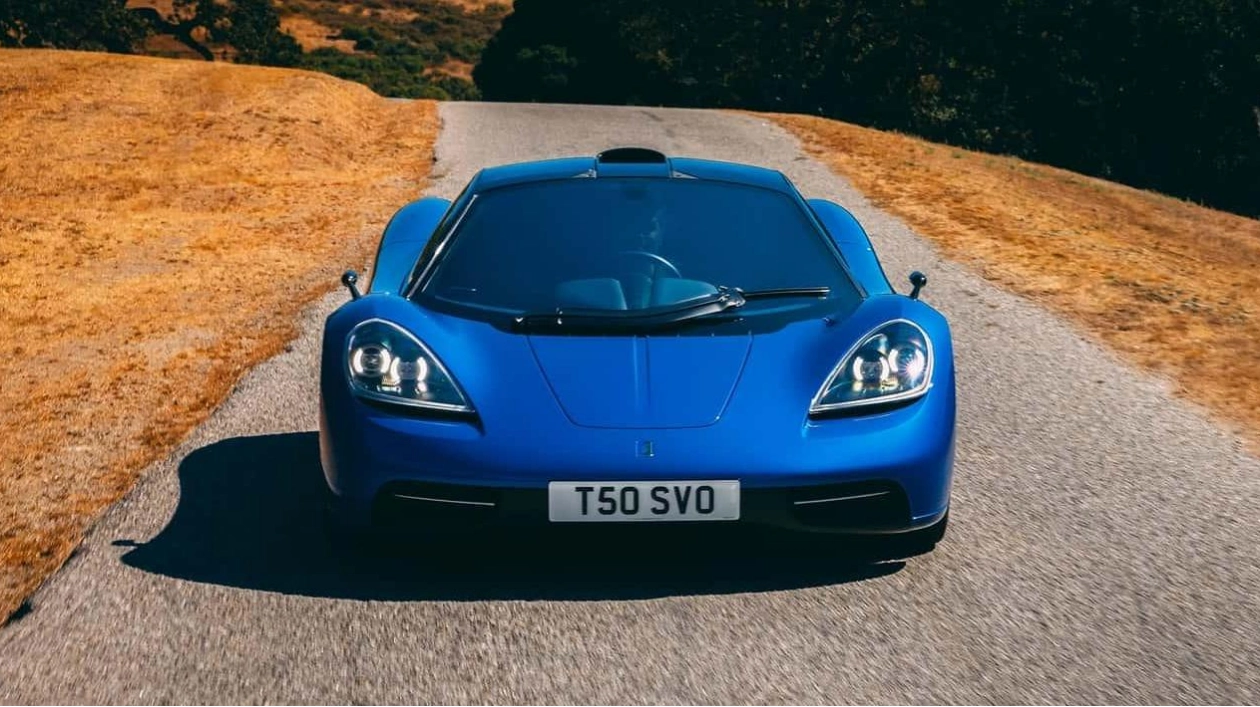“I’ll be up at 6:00 a.m., already receiving texts from Gordon for an hour,” Dario Franchitti remarks, serving as a development driver for Gordon Murray Automotive's (GMA) awe-inspiring T.50 hypercar. “‘What about this? What if we did this?’” Murray queries Franchitti. Despite the T.50's development being technically complete (25 out of 100 planned cars have been delivered), Murray's mind continues to refine in the present and envision GMA's future. “We have plans until 2040,” Franchitti notes. The three-time Indy winner and four-time IndyCar champion has been a pivotal member of the GMA development team. Contrary to expectations, Franchitti and Murray aim to create a road car that is engaging, thrilling, and above all, fun. Comparisons between the T.50 and Murray’s other masterpiece, the McLaren F1, are inevitable. Both feature lightweight three-seater designs with bespoke V-12 engines, manual transmissions, and a focus on exceptional road handling rather than sheer speed. The F1's reign as the world’s fastest car was a fortunate byproduct, igniting a horsepower and top speed race that continues today.
Despite supercars becoming quicker, faster, and more capable, driver engagement has declined. The T.50 counters this trend with modern components. Standing beside the T.50, its compact size is striking; it's Boxster-sized and weighs 2200 pounds, slightly less than the F1. This is remarkable for a modern car, considering the additional safety equipment required today. The T.50's 4.0-liter Cosworth V-12 produces 654 hp, slightly more than the F1. However, the T.50's engine revs to 12,400 rpm, promising an exhilarating experience. Inside, the T.50 is snug, with the driver seated centrally and passengers behind. Franchitti demonstrates the T.50's usability and ride quality, navigating speed bumps and steep driveways effortlessly. The engine impresses with its tractability and instant throttle response, capable of running from 20 mph to 186 mph in second gear.
Carmel Valley Road showcases the T.50's prowess, absorbing bumps with ease. The passive dampers offer a single, optimal ride quality setting, developed with Michelin Pilot Sport 4S tires. Franchitti emphasizes the focus on fun, occasionally dialing back overly stiff settings to align with the T.50's goals. Passenger and driver experiences differ due to varying seating positions relative to the axles. The engine offers different throttle maps for varied driving styles, with GT mode providing smoother lift-off and Sport mode offering quicker, more abrupt transitions. Cosworth's engine delivers manic power in lower gears yet remains smooth around town, paired with a manual gearbox.
A ride-along in a car like the T.50 offers limited insight. Franchitti highlights advancements in brakes and headlights since the F1, with improved quality and reduced weight. The T.50 uses off-the-shelf, smallest carbon ceramic brakes from Brembo. The attention to detail is evident, with the rear fan enhancing stability under high-speed braking and cornering. The interior boasts finely milled controls, reminiscent of Swiss watch craftsmanship. Franchitti mentions GMA's diverse customer base, emphasizing the T.50's intended use over display. GMA encourages owners to drive their T.50 extensively, rewarding the owner with the most miles each year.






